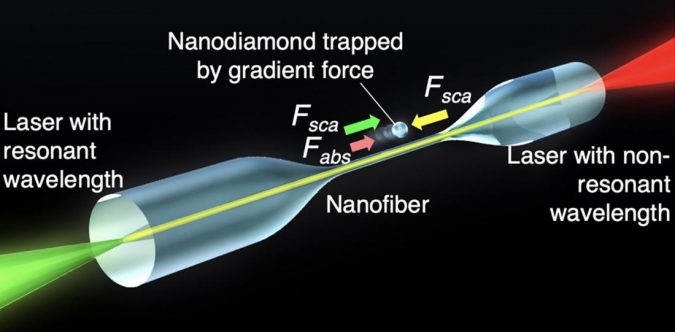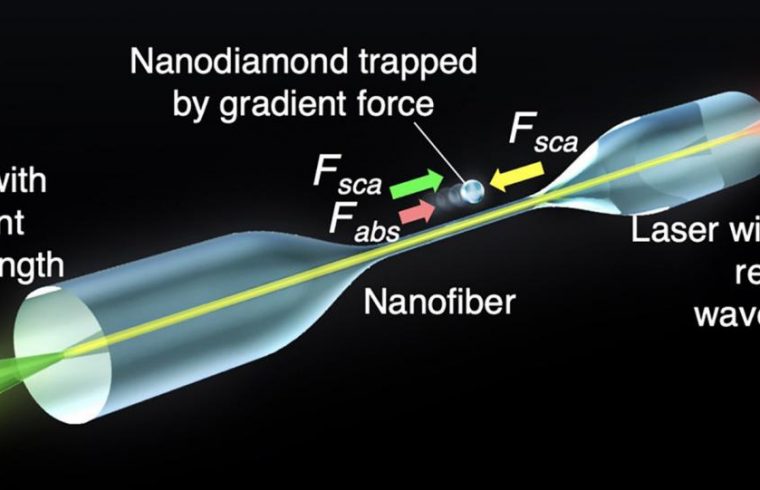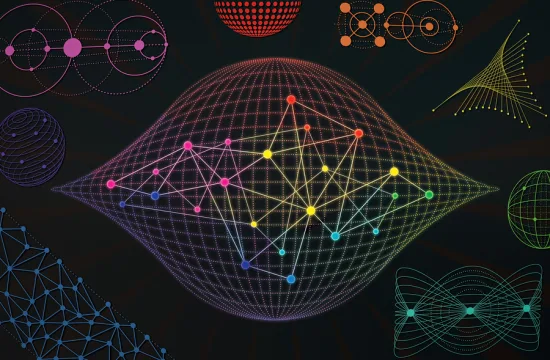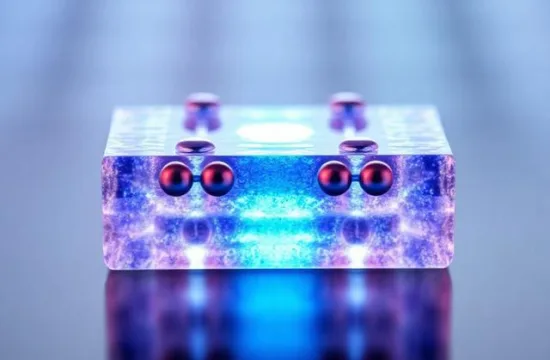
Scientists have developed a method to use lasers to control the movement of nanodiamonds with fluorescent centers.
They have long been working on improving their ability to use lasers to move small objects without actually touching them. This method of ‘optical trapping and manipulation’ is already utilized in optics, biological sciences and chemistry. But objects become much more difficult to control once they grow to nanoscale size.
The team of scientists including Hokkaido University’s Keiji Sasaki and Osaka Prefecture University and Osaka University’s Hajime Ishihara have found a way to move diamond nanoparticles of about 50 nanometres in diameter, using opposing lasers.
“We believe our approach can enable a new class of optical force methodologies to investigate the characteristics of advanced nanomaterials and quantum materials and to develop state-of-the-art nanodevices,” says Sasaki.
Nanodiamonds have carbon atom lattices that sometimes contain an imperfection in which two neighbouring carbon atoms are replaced with a nitrogen atom and a vacancy (fluorescent center), which affect their quantum mechanical properties; nanoparticles react to light differently depending on their quantum mechanical property.
Nanodiamonds with this fluorescent center (resonant nanodiamonds) absorb green light and emit red fluorescence and are being investigated for applications in biological imaging, sensing and single-photon sources. Nanodiamonds without fluorescent centers are non-resonant.
Sasaki and his colleagues soaked an optical nanofiber in solutions of nanodiamonds with and without fluorescent centers. Shining a green laser through one end of the nanofiber trapped a single nanodiamond with fluorescent centres and transported it away from the laser.
Their experiments, published in the journal Science Advances, aim to further research into the development of applications in fields like biological imaging and quantum computing.







